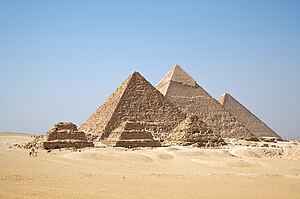 Image via Wikipedia
Image via WikipediaMARINA, Egypt – Today, it's a sprawl of luxury vacation homes where Egypt's wealthy play on the white beaches of the Mediterranean coast. But 2,000 years ago, this was a thriving Greco-Roman port city, boasting villas of merchants grown rich on the wheat and olive trade.
The ancient city, known as Leukaspis or Antiphrae, was hidden for centuries after it was nearly wiped out by a fourth century tsunami that devastated the region.
More recently, it was nearly buried under the modern resort of Marina in a development craze that turned this coast into the summer playground for Egypt's elite.
Nearly 25 years after its discovery, Egyptian authorities are preparing to open ancient Leukaspis' tombs, villas and city streets to visitors — a rare example of a Classical era city in a country better known for its pyramids and Pharaonic temples.
"Visitors can go to understand how people lived back then, how they built their graves, lived in villas or traded in the main agora (square)," said Ahmed Amin, the local inspector for the antiquities department. "Everyone's heard of the resort Marina, now they will know the historic Marina."
Greek columns and bright limestone walls up to six feet high (2 meters) stand in some places, reflecting the sun in an electric blue sky over the dark waters of the nearby sea. Visitors will also be able to climb down the steep shafts of the rock-cut tombs to the deeply buried burial chambers of the city's necropolis.
It is from the sea from which the city gained much of its livelihood. It began as a way station in the coastal trade between Egypt and Libya to the west. Later, it began exporting goods from its surrounding farms overseas, particularly to the island of Crete, just 300 miles (480 kilometers) away — a shorter trip than that from Egypt's main coastal city Alexandria.

No comments:
Post a Comment